Major X1.2 solar flare erupts from Region 3663 — second X-class flare of the day
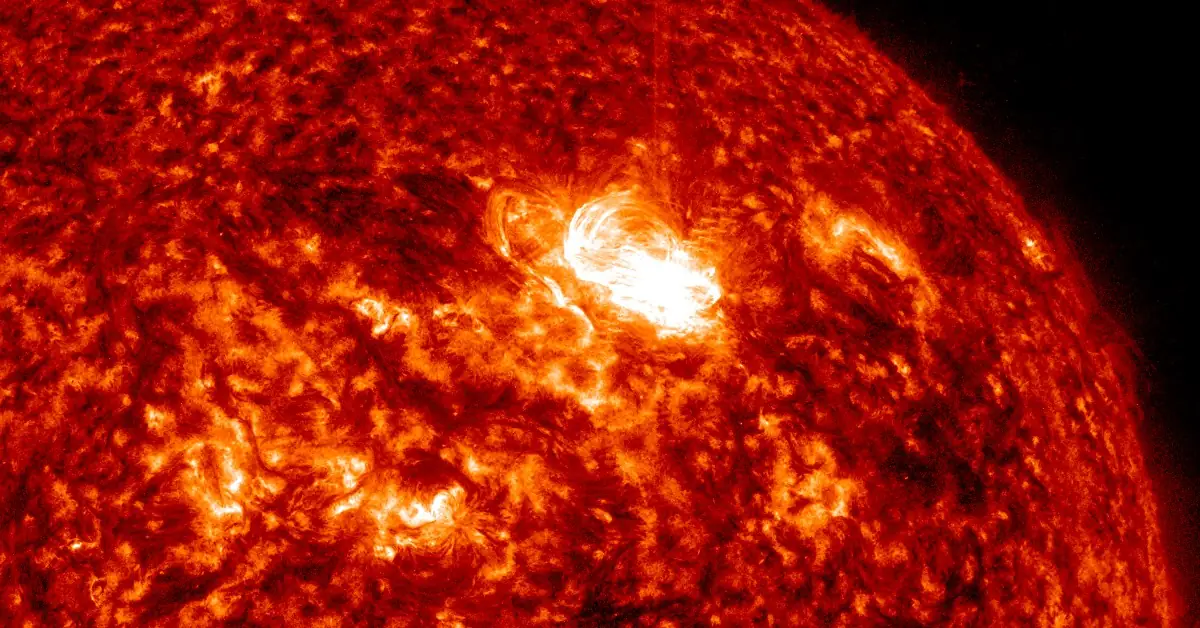
A major solar flare measuring X1.2 erupted from Active Region 3663 (beta-gamma-delta) at 11:54 UTC on May 5, 2024. The event started at 11:41 and ended at 12:16 UTC. This is the second X-class solar flare of the day, after X1.3 at 06:01 UTC, and the third from Region 3663 since X1.6 on May 3.
Similarly to the previous X-class flare, the X1.2 at 11:54 UTC didn’t have associated radio signatures that would suggest a coronal mass ejection (CME) was produced. If it was, there is a potential that some of it is Earth-directed.
Unfortunately, LASCO coronagraph imagery has been unavailable since late May 3, making CME impacts — from this and previous significant events, hard to forecast.
Radio signatures were forecast to be most degraded over Europe, Africa, and the Atlantic Ocean at the time of the flare.
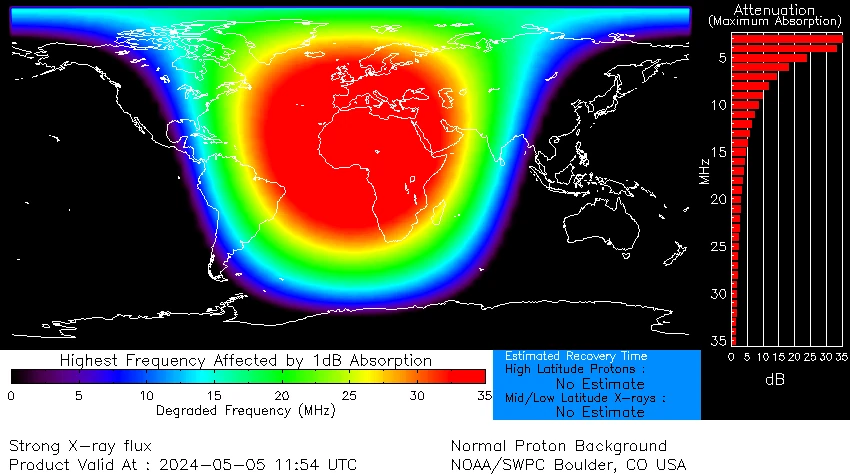
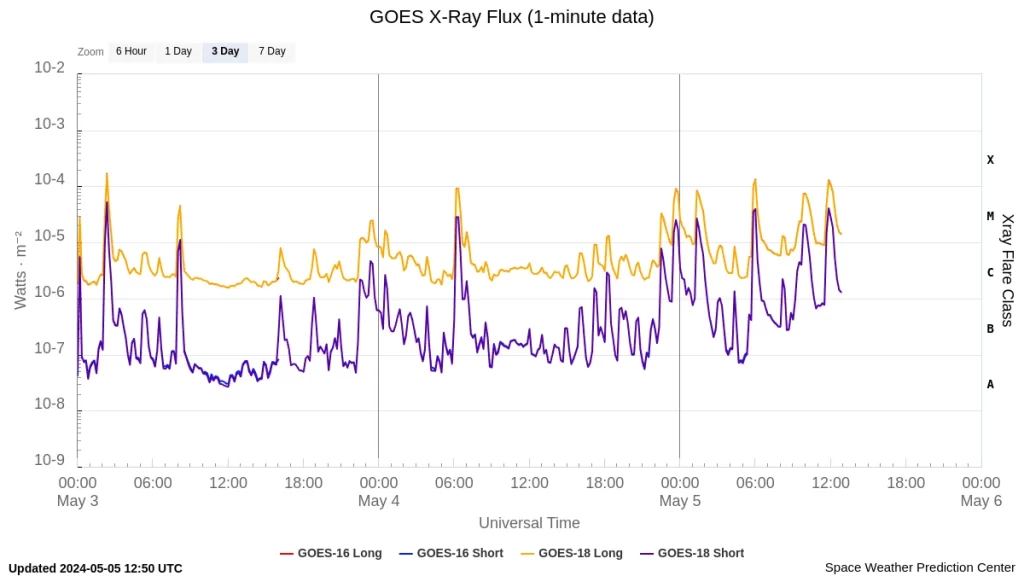
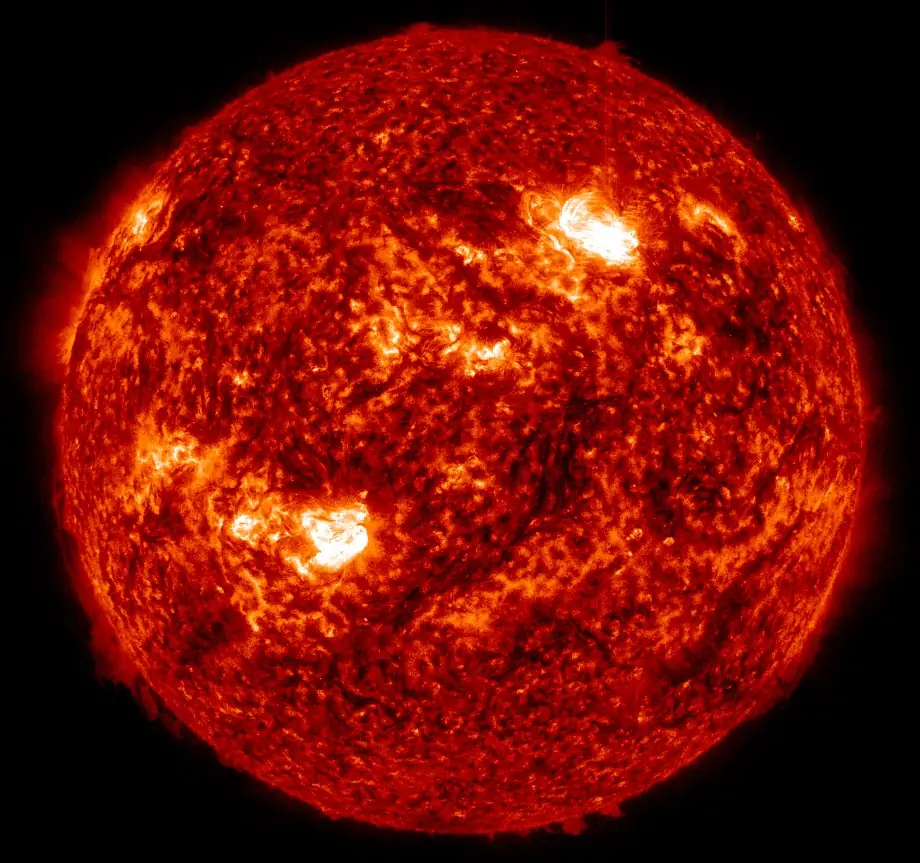
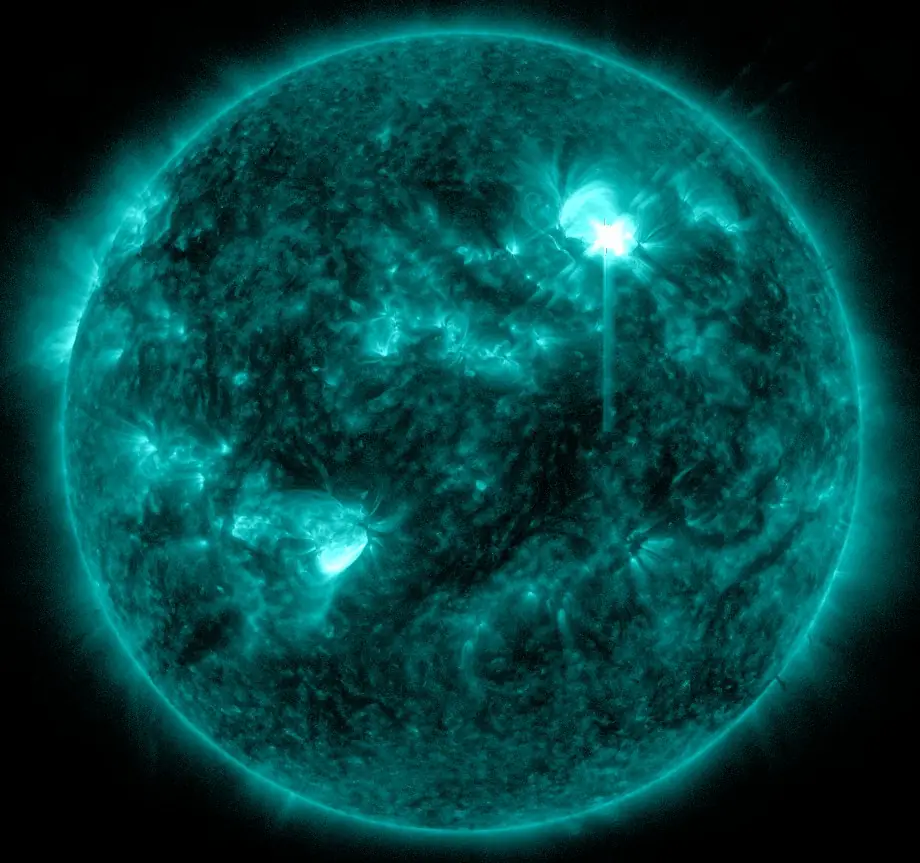

Region 3663 also produced three R2 – Moderate events and 3 R1 – Minor, as well as a Tenflare (280 sfu) associated with a C8.8 flare at 03:17 UTC, in 24 hours to 12:30 UTC on May 5. Region 3664 (beta-delta) also produced M-class activity with an M2.3 (R1) flare at 09:38 UTC.
“Analysis and modeling of any associated CMEs will be conducted once coronagraph imagery becomes available,” SWPC forecasters said, referring to LASCO issues.
Regions 3663 and 3664 exhibited minor growth over the past 24 hours, while the newly numbered Region 3668 (beta) was relatively quiet. The remaining active regions were mostly stable or in gradual decay.
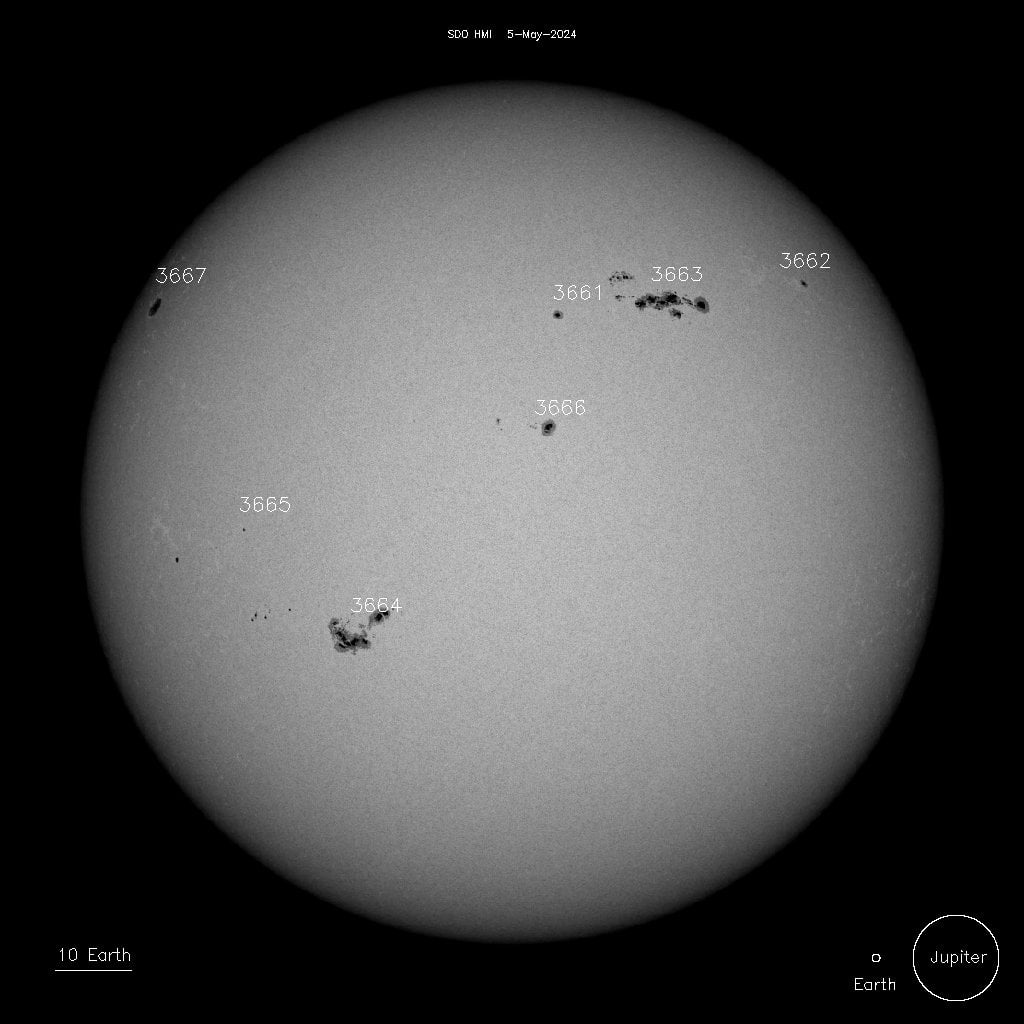
Solar activity over the next 24 hours is expected to be at moderate levels (75% / M-class), with a chance for X-class flares (25%) through May 7.
Mildly enhanced solar wind conditions and positive polarity coronal hole high speed stream (CH HSS) influences are likely to prevail through May 7. However, a stronger disturbance is expected late May 5 into May 6 (UTC day) due to the anticipated arrival of CME produced by X1.6 solar flare on May 3.
Periods of G1 – Minor storming are likely on May 5 due to positive polarity CH HSS influences and the anticipated arrival of the May 3 CME late in the day. Periods of G1 – Minor to G2 – Moderate storming are likely on May 6 due to continued CME activity and CH HSS influences. Active conditions are likely on May 7 with the expected onset of another positive polarity CH HSS.
Read more:
References:
1 Forecast Discussion – Issued: 2024 May 05 1230 UTC – Prepared by the U.S. Dept. of Commerce, NOAA, Space Weather Prediction Center
Featured image: X1.2 solar flare on May 5, 2024. Credit: NASA SDO/AIA 304

Commenting rules and guidelines
We value the thoughts and opinions of our readers and welcome healthy discussions on our website. In order to maintain a respectful and positive community, we ask that all commenters follow these rules.